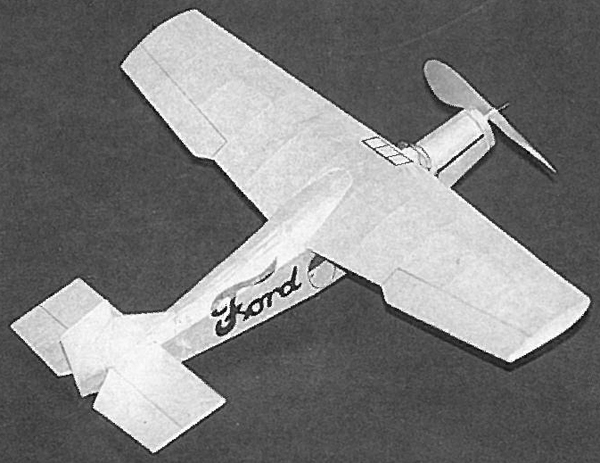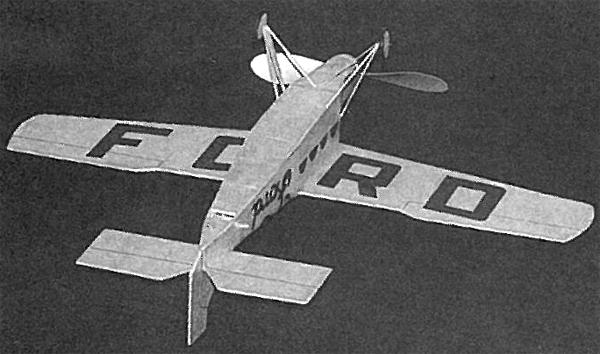Aero Modeller old issue n°764 p.21 - Juin 1999 - Documentation: Volaré Products
Stout Ford 2 AT
In 1924, Bill Stout was inspired to try his genius at an all-metal airliner, able to transport cargo and a few passengers. He found a willing partner in Henry Ford, who wanted to form the Detroit-Dearborn Airline with this bird as the basis. This model is the prototype for later production versions - this plan has substantial changes to make it easier to build for Peanut novices.
Download the plan (Original by "Doc" Martin, revised and re drawn by Dave Linstrum).
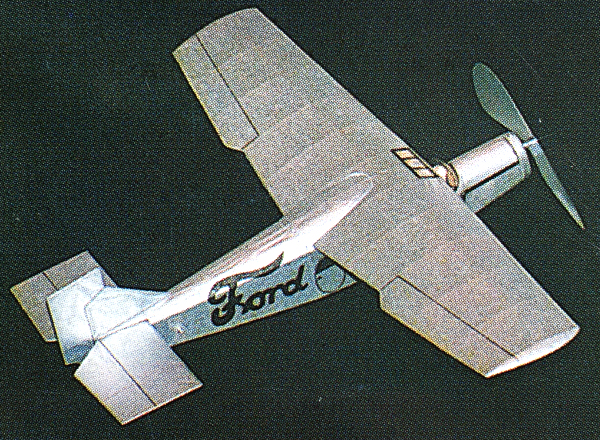
Are you ready to build this Golden Age flyer?
First, make two A3 copies of the full size centre pages (press it tight to glass) at your local copy/print shop - tape one to your building board (cover with waxed paper or cling film to prevent glue bonding to paper) and use the other for patterns, tracing decoration etc. Be sure to read all the notes on the plan and assemble all the required tools, balsa (use 61b for indoor, 101b outdoor), tissue, glue and paints (if you choose to air-brush, rather than just use coloured tissue). Do not dope this model - it will warp like a pretzel. Use rubbing alcohol to shrink the tissue, or pre-shrink it on a frame before covering.
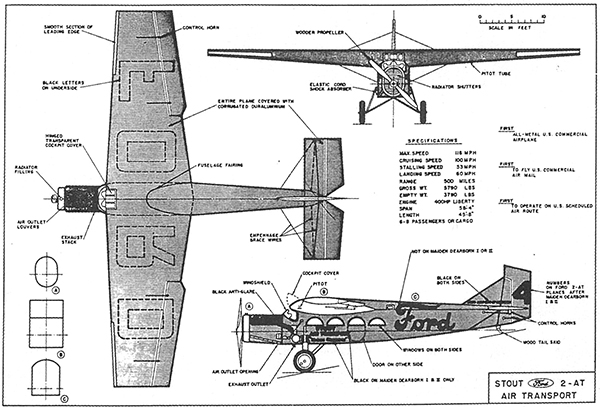
Full size 3-view: click here
This is a basic workshop tool inventory:
- X-Acto with #11 blade, or broken double-edge blade (be careful!)
- Dressmaker pins with bead heads
- A self-sealing cutting board (a scrap of dark artist's mat board will do)
- Glue applicator
- Fine point artist's sable brush
- Needle nose pliers
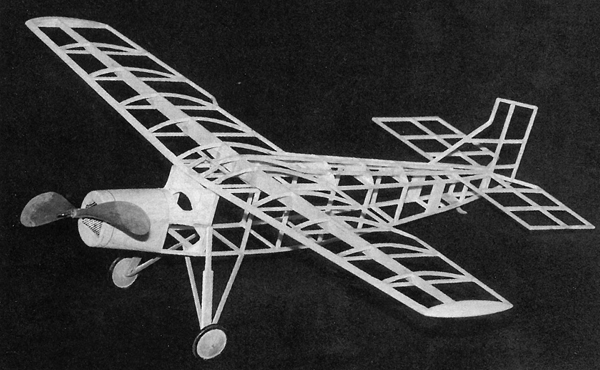
The skeleton photo will show the major frame-work assembled and the plans are fully annotated, so I won't give you step-by-step assembly instructions here. If you are not familiar with stick & tissue construction, try a Peck ROG, Sky Bunny or simple Peck Peanut kit like the Nesmith Cougar before you try this design.
(These kits are available by mail order from SAMs - see their ad in this issue - Ed.)
It is best to add some details like ID numbers, trim etc. before covering, but after any airbrushing of tissue. Cover using thin white glue - remember no dope anywhere on model. A #8 and #5 Micron Pigma India ink technical pen make a great pair for lettering and control outlines, etc. It is non-smear and permanent.
I have found that trimming high-wing mono-planes like this one is easier if you build in some down and right thrust, adjusting for a loose right hand circle in the climb. Outdoors, the glide is a minor part of flight - indoor, the prop should turn in cruise until touchdown. The C.G. balance point should be as shown on side view. Add strip solder under nose to adjust - I prefer this to the traditional greasy Plasticine. Be sure you have the correct wing washout at tips. A bit of washin (TE low) in right wing or a paper trim tab bent down can keep the right wing up in a turn.
If you want to be the pilot who takes this big silver bird up on a flight to the mighty Ford plant at Dearborn, crank up the motor and take off that grass runway. I know you will get a vicarious thrill out of imagining you are part of aviation history.
AM
